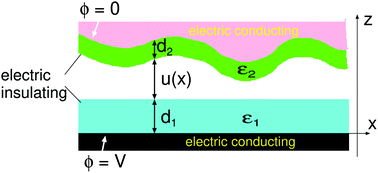Electroadhesion with application to touchscreens
Abstract
There is growing interest in touchscreens displaying tactile feedback due to their tremendous potential in consumer electronics. In these systems, the friction between the user's fingerpad and the surface of the touchscreen is modulated to display tactile effects. One of the promising techniques used in this regard is electrostatic actuation. If, for example, an alternating voltage is applied to the conductive layer of a surface capacitive touchscreen, an attractive electrostatic force is generated between the finger and the surface, which results in an increase in frictional forces acting on the finger moving on the surface. By altering the amplitude, frequency, and waveform of this signal, a rich set of tactile effects can be generated on the touchscreen. Despite the ease of implementation and its powerful effect on our tactile sensation, the contact mechanics leading to an increase in friction due to electroadhesion has not been fully understood yet. In this paper, we present experimental results for how the friction between a finger and a touchscreen depends on the electrostatic attraction and the applied normal pressure. The dependency of the finger–touchscreen interaction on the applied voltage and on several other parameters is also investigated using a mean field theory based on multiscale contact mechanics. We present detailed theoretical analysis of how the area of real contact and the friction force depend on contact parameters, and show that it is possible to further augment the friction force, and hence the tactile feedback displayed to the user by carefully choosing those parameters.



 Please wait while we load your content...
Please wait while we load your content...